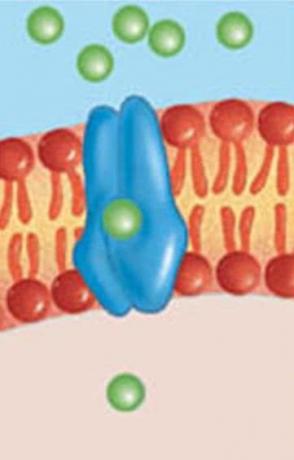The abyssal zone corresponds to more than 70% of the planet's biosphere, although it is also one of the least known. It is the deepest region of the oceans, located below two thousand meters deep. Thus, in addition to having extremely high pressure, this environment is very cold and also dark.
Due to these conditions, many scholars believed that the abyssal zone was an inhospitable region. However, currently, it is known that this idea is not true. There are found some amazing animals, extremely adapted to this environment, with a variety of strategies to conquer their survival. Eyes large, very small or absent; and small body size are some of them.
Other characteristics refer to the diet itself: as there are few algae in these regions, most abyssal animals are carnivorous. As the availability of prey is not abundant, huge mouths and large stomachs, found, for example, in the anglerfish or deep-sea fish (Linophryne arborifera), allow the animal to devour individuals as large or even larger than itself, being able to remain for a long time without feeding again.
Sharp and half-open teeth provide better performance when biting the victim and prevent them from escaping from your mouth. The abyssal viperfish (Chauliodus sloani) is an example that contemplates this case. The ogre fish, Anoplogaster cornuta, feeds on the debris found along the way...
Bioluminescence, which is the ability to emit light, is another strategy. Such ornamentation facilitates the attraction of prey and also of potential reproductive partners. The sea devil, the abyssal viper fish, the silver ax (Argyropelecus hemigymnus) and the vampire squid (Vampyreuthis infernalis) are some representatives that have this adaptation.
Speaking of reproduction, individuals of some species, such as the gracile gonostoma, have an amazing way of life: sometimes they present themselves with the female sex, sometimes with the male sex. Others are hermaphrodites and self-fertilize.
Perhaps the most surprising case of all is what happens to the male of Melanocetus johnsonii. This, morphologically much smaller than the female, settles in her body and starts to share even her bloodstream, taking advantage of its nutrients, since it is born without a digestive system. Over time, it degenerates, leaving only its gonads. These release sperm when the female is fit, fertilizing her.
Exciting, isn't it?
Do not stop now... There's more after the advertising ;)
By Mariana Araguaia
Graduated in Biology
Brazil School Team
animalia kingdom - Realms of the Living World - Biology - Brazil School
Would you like to reference this text in a school or academic work? Look:
ARAGUAIA, Mariana. "Beings of the abyssal zone"; Brazil School. Available in: https://brasilescola.uol.com.br/biologia/seres-zona-abissal.htm. Accessed on June 27, 2021.



